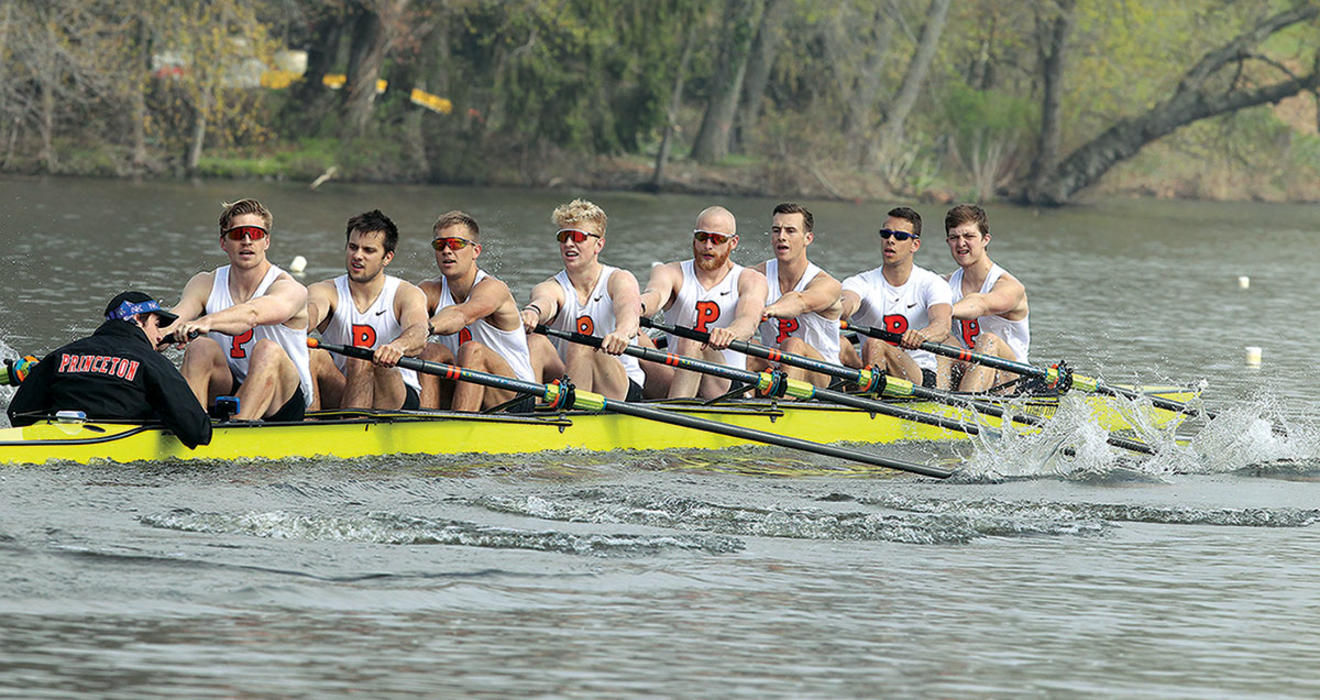
When the Princeton rowing teams traveled to Tampa, Fla., in January, they brought along a high-tech training aid. The system, manufactured by Peach Innovations, is rigged on an eight-person shell and measures the watts of power generated by each oar 100 times per second while also tracking the velocity and acceleration of the hull.
The data collected from each oarlock is then plotted in a series of overlapping bell curves — one for each stroke — to show how much power a rower is generating and how he’s generating that power. “It’s a great objective visual,” says Greg Hughes ’96, head coach of the heavyweight men. Coaches can review the data with their athletes, suggest refinements, and then revisit a rower’s data a few weeks later to see if their changes have made a measurable difference.
Hughes says there are subtle differences in each rower’s technique, and there’s no perfect stroke. “This is like your signature,” he tells his rowers when they review the data. “My goal isn’t to change the way that you sign your name. All I’m trying to do is clean up your penmanship a little bit.”
READ MORE A Whole New Ball Game: MIT professor Peko Hosoi ’92 explores the underlying complexity of sports
Those “signatures” also allow coaches to observe details they might not otherwise notice. For example, if a rower has a steep power curve that peaks early, a coach might try moving her to the stroke seat, where that style of rowing could have the greatest effect.
The Princeton teams were early adopters of the Peach system and remain on the cutting edge of rowing biomechanics, but their data-driven approach is just one of many ways to assess a rower’s development. “We don’t use this as a primary tool for choosing an athlete or selecting a boat,” Hughes says. “We use it as a tool to understand how they’re progressing and as a way to assist them in making changes.”






No responses yet